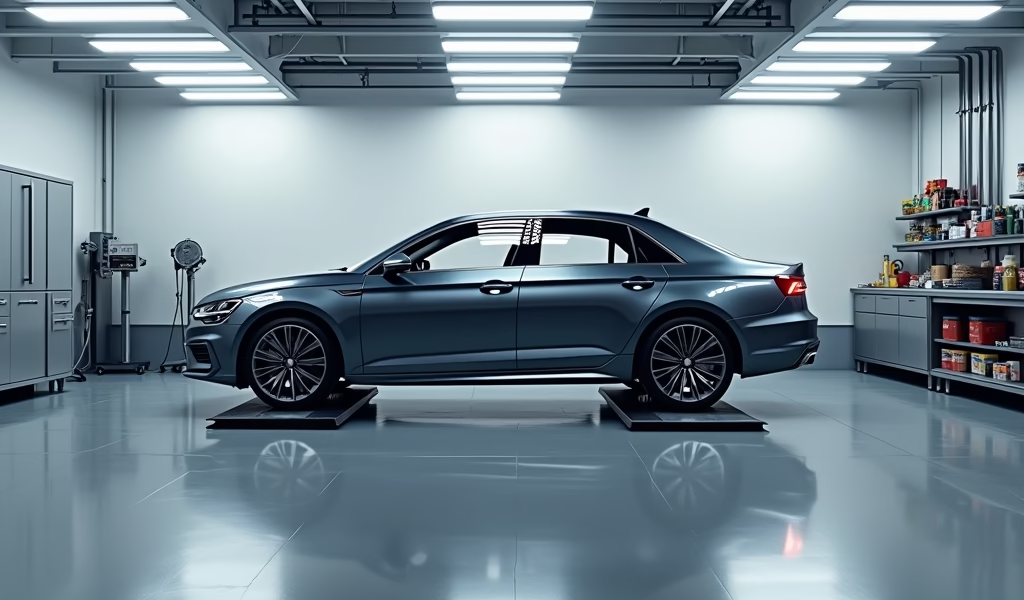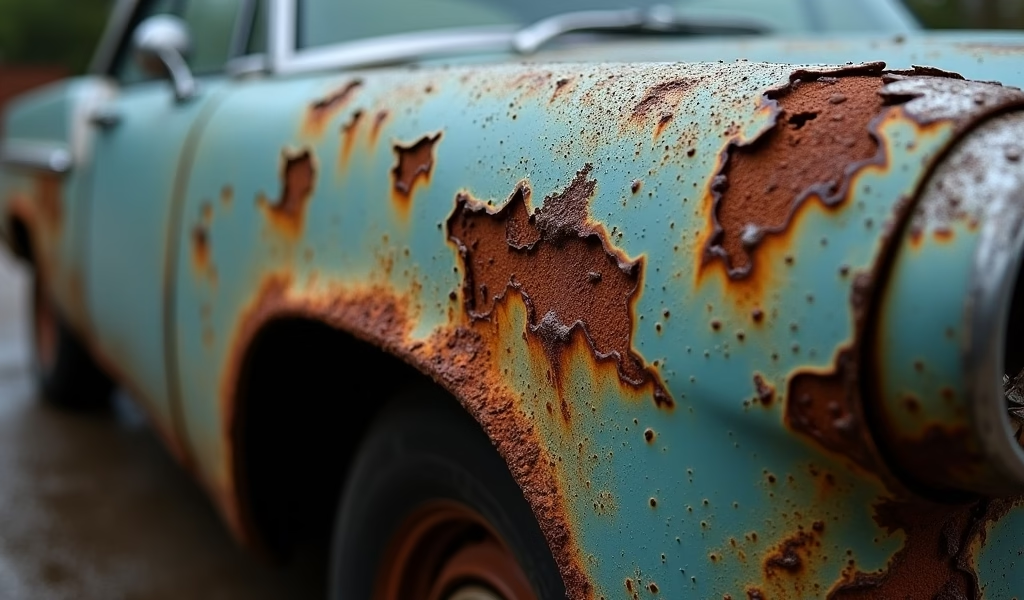Overview
This article presents five different rust protection methods for vehicles: electronic systems, oil-based treatments, dripless oil sprays, tar-based undercoatings, and wax-based rustproofing, while emphasizing that rust prevention is more cost-effective than repair. Regular maintenance practices like frequent washing, immediate paint damage repair, strategic parking, seasonal preparation, and clearing drainage holes are essential components of an effective rust prevention strategy.
Table of Contents
- Understanding Rust: The Silent Vehicle Killer
- Early Warning Signs of Rust You Shouldn’t Ignore
- 1. Electronic Rust Protection: High-Tech Defense Against Corrosion
- 2. Oil-Based Rust Protection: The Tried and True Method
- 3. Dripless Oil Spray: Cleaner Protection for Modern Vehicles
- 4. Tar-Based Undercoating: Heavy-Duty Defense for Your Underbody
- 5. Wax-Based Rustproofing: Balanced Protection
- DIY vs Professional Application: Making the Right Choice
- Year-Round Maintenance Tips for Rust Prevention
- Conclusion: Protecting Your Investment
- Frequently Asked Questions
Understanding Rust: The Silent Vehicle Killer
Rust is the automotive equivalent of dental decay – by the time you see it, significant damage has already begun. As a mechanic who’s spent over 20 years examining the undercarriages of countless vehicles, I can tell you that rust doesn’t discriminate – it attacks your car regardless of make or model. The chemical process occurs when iron in your vehicle’s metal components reacts with oxygen in the presence of moisture, forming iron oxide – that flaky, reddish-brown substance that compromises structural integrity.
This corrosive process is particularly aggressive in your car when exposed to certain conditions. Coastal areas expose vehicles to salt air while northern regions battle road salt during winter months. Even if you live in a temperate climate, morning dew and rainfall provide enough moisture to kick-start the oxidation process if your vehicle isn’t properly protected.
Rust typically begins its assault in areas where moisture can accumulate and sit unnoticed:
- Wheel wells and inner fender areas
- Underbody components including frame rails and suspension parts
- Door bottoms, rocker panels, and quarter panels
- Trunk floors and spare tire wells
- Hood and trunk lid edges
The financial impact of rust extends beyond simple aesthetics. Left unchecked, corrosion can transform a small repair into a structural nightmare that significantly reduces your vehicle’s resale value. I’ve seen perfectly running vehicles scrapped solely because rust had compromised their structural integrity beyond reasonable repair costs.
Early Warning Signs of Rust You Shouldn’t Ignore
Before diving into prevention methods, let’s talk about how to spot rust in its early stages. Catching corrosion early can save you thousands in repairs down the road. Here’s what to look for during your regular vehicle inspections:
- Bubbling or blistering paint – this indicates rust forming underneath the surface
- Small orange or brown spots appearing on painted surfaces
- Unusual staining below door panels or along rocker panels
- Flaking or rough textures in previously smooth metal areas
- Soft spots in floor pans or trunk areas
Don’t be fooled by a clean exterior. Many vehicles look pristine from above while harboring significant underbody rust. Take time to look underneath your vehicle occasionally or have it inspected during routine maintenance. A flashlight and a few minutes can reveal developing problems before they become serious.

1. Electronic Rust Protection: High-Tech Defense Against Corrosion
Electronic rust protection represents the cutting edge of anti-corrosion technology, and as someone who’s installed dozens of these systems, I can tell you they’re worth considering. These systems work by emitting a weak electrical current throughout your vehicle’s metal surfaces, which disrupts the electrochemical process that causes oxidation.
The installation process is straightforward: a small control module connects to your vehicle’s battery and distributes a low-voltage current through strategic points on your car’s body. This current creates a condition where iron atoms are less likely to bond with oxygen, effectively short-circuiting the rusting process before it begins.
The major advantages of electronic systems include:
- One-time installation with minimal maintenance
- No messy sprays or coatings to deal with
- Whole-vehicle protection including difficult-to-reach areas
- Most systems last the lifetime of the vehicle
However, these systems aren’t without limitations. They work best when installed on new vehicles before any corrosion has begun. Once rust has started, these systems can help slow progression but won’t reverse existing damage. Expect to pay between $300-$600 for a quality system with professional installation. While that might seem steep initially, when spread across the lifetime of your vehicle, it’s a relatively small investment to protect against costly rust damage.
2. Oil-Based Rust Protection: The Tried and True Method
When it comes to proven rust protection, oil-based treatments have earned their reputation among mechanics for good reason. These penetrating formulas create a moisture-repelling barrier that actively displaces water from metal surfaces – exactly what you need to prevent oxidation.
Unlike some newer technologies, oil-based rustproofing has decades of real-world testing behind it. The application process involves spraying a specialized oil formula into enclosed body panels, frame rails, and vulnerable areas through existing access points or small, strategically drilled holes. The oil then creeps into seams, crevices, and tight spots that other treatments can’t reach.
What makes oil treatments particularly effective is their ability to:
- Penetrate deeply into seams and spot welds where moisture hides
- Displace existing moisture before it can cause corrosion
- Create a self-healing barrier that flows to cover small scratches
- Protect hard-to-reach areas like door internals and pillars
Popular brands include Krown, Rust Check, and Fluid Film, each with slightly different formulations but similar protective qualities. Most oil treatments require annual reapplication to maintain maximum protection, typically costing $80-$150 depending on your vehicle size.
The main downside? These treatments can be somewhat messy, occasionally leaving residue that might drip in warm weather. For many car owners, however, this minor inconvenience is well worth the comprehensive protection provided. I’ve seen vehicles in harsh northern climates stay rust-free for 15+ years with consistent oil treatment application.
3. Dripless Oil Spray: Cleaner Protection for Modern Vehicles
For those who want the proven protection of oil-based treatments without the potential mess, dripless oil sprays offer an excellent middle ground. These evolved formulations maintain the penetrating qualities of traditional oils but are designed to set up after application, significantly reducing drips and residue.
Dripless formulas are thicker and contain additives that help them cling to surfaces rather than flowing continuously. They still penetrate effectively into seams and crevices but stay where applied. This makes them particularly suitable for daily drivers and vehicles that are parked in garages or clean environments.
The application process requires specialized equipment that can atomize the thicker formula and inject it through access points in the vehicle’s body. Small holes may need to be drilled in hidden areas to access certain sections – but don’t worry, these are typically the size of a pencil lead and are placed in inconspicuous locations.
Dripless treatments excel in protecting:
- Modern vehicles with complex body designs
- Cars with numerous enclosed sections and channels
- Vehicles regularly parked in garages or driveways
- Areas where cleanliness is a priority
Cost-wise, expect to pay slightly more than traditional oil sprays – typically $120-$200 annually depending on your vehicle and location. The higher price reflects both the premium formulation and the more time-consuming application process. For many of my clients who want effective protection without the occasional drips of standard oil, this extra cost is a worthwhile tradeoff.

4. Tar-Based Undercoating: Heavy-Duty Defense for Your Underbody
If you drive a truck, SUV, or regularly travel unpaved roads, tar-based undercoating provides industrial-strength protection for your vehicle’s most vulnerable areas. These thick, rubberized coatings create a durable shield against road debris, salt spray, and moisture – essentially armoring your underbody against the elements.
Unlike the penetrating treatments we’ve discussed, tar-based products form a physical barrier on external surfaces. When properly applied, they provide multiple benefits:
- Robust protection against stone chips and road debris impact
- Significant reduction in road noise and vibration
- Excellent resistance to salt spray and chemical exposure
- Long-lasting protection with minimal maintenance
Application requires specialized high-pressure spray equipment and thorough preparation of surfaces. The material adheres to clean metal and dries to a tough, slightly flexible coating that can withstand considerable abuse. A quality application can last 3-5 years before needing inspection and possible touch-ups.
While highly effective, tar-based coatings aren’t appropriate for all situations. They work best on visible underbody areas rather than enclosed sections, and they can trap moisture if applied over existing rust. For this reason, I typically recommend them as part of a comprehensive approach rather than a standalone solution. According to NHTSA research, combined protection strategies yield the best long-term results.
Expect to pay $300-$500 for a quality application, with prices varying based on vehicle size and preparation needed. While more expensive upfront, the multi-year protection makes it economically comparable to annual treatments when calculated over time.
5. Wax-Based Rustproofing: Balanced Protection
For those seeking a middle ground between heavy-duty tar coatings and lighter oil treatments, wax-based rustproofing presents an attractive option. These formulations create a semi-permanent, water-repellent barrier that shields metal surfaces without the ongoing maintenance of oil treatments.
Wax-based products apply as a heated liquid that flows into seams and crevices before cooling and solidifying. Unlike oils, these treatments set completely and don’t remain active or self-healing. This has both advantages and disadvantages:
- Cleaner application with no residue or dripping after curing
- Moderate durability lasting 1-2 years in typical conditions
- Good adherence to vertical surfaces and underbody components
- Less effective at penetrating tight seams than oil treatments
The application focuses primarily on the underbody, wheel wells, and lower body panels. Most applications use high-temperature spray equipment to ensure proper flow and adhesion of the wax compound.
These treatments work best in regions with moderate climate variations. Extreme cold can make the wax brittle, while extreme heat may cause softening. If you live in areas with dramatic temperature swings, this might not be your ideal solution.
Cost-wise, wax treatments typically run $150-$250 and need reapplication every 1-2 years. They represent a good compromise for first-time car buyers who want protection without committing to more intensive or expensive options.
DIY vs Professional Application: Making the Right Choice
As a professional mechanic who’s seen both excellent and disastrous DIY rust protection attempts, I can tell you that application quality significantly impacts effectiveness. While some treatments can be successfully applied at home, others require specialized equipment and expertise.
DIY-friendly treatments include:
- Spray-can wax products for spot treatment and touch-ups
- Consumer-grade oil sprays for accessible areas
- Electronic modules with straightforward installation
Treatments best left to professionals:
- Complete oil or dripless spray applications requiring access to enclosed panels
- Tar-based undercoating requiring specialized spray equipment
- Complex electronic system installations with multiple connection points
While DIY approaches might save $50-$150 initially, professional application ensures complete coverage of critical but hidden areas. The cost difference typically proves worthwhile considering the comprehensive protection and expertise provided. Most importantly, professionals know where to focus their attention based on your specific vehicle’s vulnerability points.
If budget constraints make professional application impossible, focus your DIY efforts on visible underbody areas, wheel wells, and door bottoms. Even partial protection is better than none, particularly in areas directly exposed to road spray and debris.
Year-Round Maintenance Tips for Rust Prevention
Beyond specialized treatments, regular maintenance plays a crucial role in keeping rust at bay. After working with thousands of vehicles, I’ve developed these practical habits that significantly extend a vehicle’s rust-free lifespan:
Regular washing is non-negotiable – Especially during winter months, wash your vehicle (including underbody) at least bi-weekly to remove salt and road chemicals. Pay special attention to wheel wells and rocker panels where road debris accumulates. Choose car washes with underbody spray options when possible.
Address paint damage immediately – Even tiny stone chips create entry points for moisture. Keep touch-up paint matched to your vehicle’s color code and address chips promptly. For larger scratches that expose metal, use a primer before applying color for proper adhesion and protection.
Park strategically when possible – Consistent outdoor exposure accelerates corrosion. When available, use garage storage to minimize exposure to precipitation and temperature fluctuations. If outdoor parking is your only option, consider a quality car cover during extended periods of non-use.
Practice seasonal preparedness – Apply or refresh rust protection before winter begins. After winter, thoroughly clean your vehicle’s underbody to remove accumulated salt and debris that could cause damage during warmer, more humid months.
Drain your doors and panels – Modern vehicles have drain holes in doors and body panels that can become clogged with debris. Check and clear these annually to prevent water accumulation inside body components. A gentle stream of water or compressed air can clear most blockages.
By combining the right protective treatments with these maintenance habits, you create a comprehensive defense system against rust. Remember that consistency matters more than intensity – regular attention prevents small issues from becoming major problems.
Conclusion: Protecting Your Investment
Rust prevention isn’t just about maintaining appearances – it’s about preserving your vehicle’s structural integrity, safety, and value. Having restored countless rust-damaged vehicles over my career, I can assure you that prevention is infinitely more cost-effective than repair.
For newer vehicles, I typically recommend starting with electronic protection combined with annual oil-based treatments for comprehensive coverage. Older vehicles already showing signs of rust would benefit most from dripless oil treatments that can penetrate and stabilize existing problem areas.
The most successful approach combines professional treatments with diligent personal maintenance. Even the best rust protection can’t compensate for negligent care, just as religious washing won’t completely overcome the lack of specialized protection in harsh environments.
When considering the cost of rust protection, remember to factor in your vehicle’s intended lifespan, your local climate conditions, and your long-term ownership plans. For those planning to keep their vehicles beyond the typical 5-year mark, comprehensive rust protection typically pays for itself many times over in preserved value and avoided repairs.
Rust may be persistent, but with the right approach, your vehicle can remain structurally sound and visually appealing for many years beyond the norm. The modest investment in protection today pays significant dividends in your vehicle’s future durability, safety, and resale value. If you’re considering buying a car, factor rust protection into your ownership costs from day one – your future self will thank you.
Frequently Asked Questions
What is the most effective rust prevention method for vehicles?
A combination approach using electronic rust protection with annual oil-based treatments provides the most comprehensive defense. This two-pronged strategy protects both accessible and enclosed areas.
How often should rust protection be reapplied?
Oil-based treatments typically need annual reapplication, while wax treatments last 1-2 years. Tar-based undercoating can last 3-5 years, and electronic systems require only occasional verification of functionality.
Can rust protection be applied to vehicles that already have rust?
Yes, but existing rust should be treated or removed first. Oil-based treatments can help slow progression of early rust, but they won’t reverse damage that’s already occurred.
Is rust proofing worth it for leased vehicles?
Minimal rust protection is advisable for leased vehicles to avoid potential end-of-lease charges for excessive corrosion. Focus on undercarriage washing and basic protection methods.
How much does professional rust proofing typically cost?
Professional rust proofing ranges from $80-$200 for annual oil treatments to $300-$600 for electronic systems or comprehensive undercoating. Costs vary based on vehicle size and treatment type.
AI-generated content should be reviewed for accuracy before being published.

